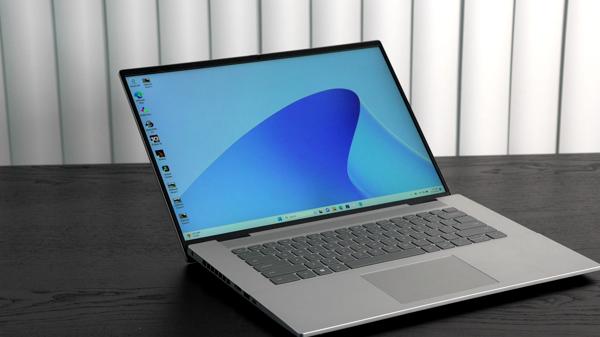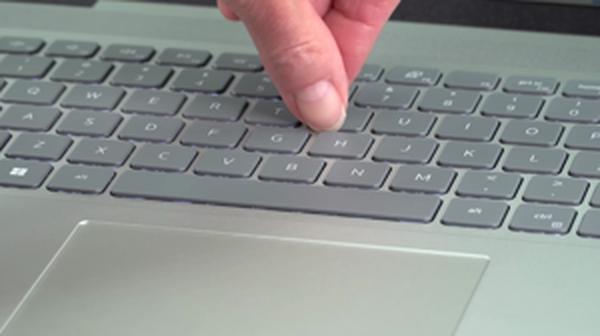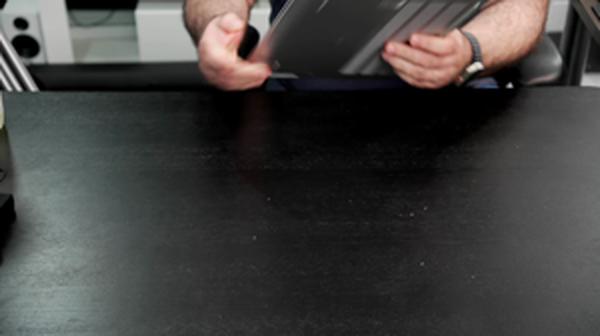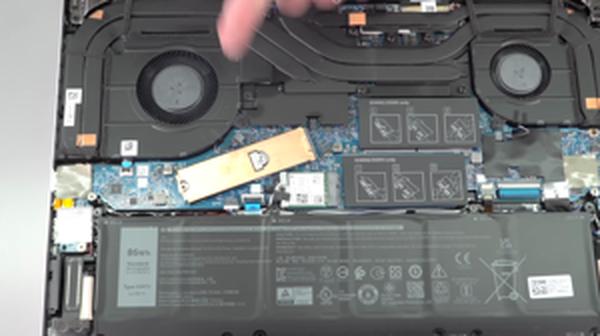My 2023 Dell Inspiron 15 7630 Laptop Experience
Introduction
I recently upgraded to a Dell Inspiron 15 7630. As someone who relies heavily on a laptop for work and a bit of play, picking the right one is crucial. I look for a machine that can handle heavy workloads, provide reliability, and maybe even offer a bit of portability. The laptop performs well but I had some issues to iron out, particularly with heat management.
Initial Impressions and Setup Challenges

Upon unboxing my new Dell Inspiron 15 7630, I was met with both anticipation and trepidation. Aesthetically, the laptop exuded a blend of modernity and minimalism, compactly housing an impressive suite of specifications. Powering on for the first time, however, I was confronted by a literal hotspot—the laptop got uncomfortably warm, casting doubts over its thermal management capabilities.
Embarking on the quest to mitigate these thermal woes, I uninstalled a slew of pre-installed bloatware that included Dell's proprietary software and antivirus programs. In the pursuit of optimizing performance, it's disappointing when manufacturers overlook the user experience by loading unnecessary applications. To further ameliorate overheating, I tweaked the power settings within the My Dell app, transitioning it to the 'cool' mode—a marginal fix but a welcome one. If you're interested in fine-tuning your Dell system further, check out my insights on the Dell Optiplex 9020 SFF Desktop: my take on working with this small pc.
Curiosity led me to conduct what could well be a rite of passage for enthusiasts—replacing the thermal paste. Armed with Noctua NT-H2, I ventured into the internals, and it was pleasantly surprising to find the Dell to be remarkably accessible. Post-repasting, the temperature issue subsided significantly, enabling smooth World of Warcraft gameplay on medium settings, free from the grips of thermal throttling. This solution, albeit effective, isn't something every user would be willing to attempt, so this could demarcate the line between a seamless experience and a DIY project. For those interested in carrying out similar hardware optimizations, my article on building your own deep learning machine in 2023: some reflections may offer useful insights.
During setup, the Inspiron's speed was notable, thanks to its i7 processor, and the 16GB of RAM was ample. Dell’s reputation for reliability seemed well-founded at this stage, but the lack of an additional USB port did leave me wanting more, considering my preference to avoid USB hubs for peripheral connections.
The inclusion of a fingerprint sensor expedited the login process—a minor but appreciated convenience over traditional password entry. The keyboard, while satisfactory in layout and featuring a handy backlight, fell short in providing the tactile feedback I prefer. It’s a concession I made for the laptop's portability.
Despite the initial hiccup with heat management, what's evident is the Inspiron's sincere attempt at balancing performance and mobility. The brand's decision to skew towards software solutions to manage power and heat, though practical, might have been better complemented with a design more conducive to airflow.
For those considering this machine, note that while it presents solid capabilities boxed in an appealing design, elements of its setup and maintenance could be intimidating for the less tech-savvy. There’s a wealth of potential here, but it does come with the assumption that you're prepared to roll up your sleeves if need be. Websites like Dell Support can be invaluable resources for troubleshooting, but don't expect an entirely plug-and-play experience.
In sum, the Dell Inspiron 15 7630, with its robust internals and sleek form factor, aligns well with users seeking a hardy yet portable machine. Despite the initial thermal challenges and the somewhat pedestrian keyboard, the laptop retains much of its luster through its performance and thoughtfully designed features.
Performance and Productivity for Professional Use

As a professional who leans heavily on a reliable laptop for various demanding tasks, I've found the Dell Inspiron 15 7630 to tick many of the right boxes. What stands out for me is the i7 processor, offering a considerable amount of computing power that's necessary for my daily workflow which includes a lot of multitasking and resource-intensive applications. The 16GB of RAM feels sufficient for now, though I appreciate the option to expand it to 32GB if the need arises in the future.
I frequently use development tools and maintain multiple local servers, which can be quite the RAM and CPU hogs. Thankfully, this setup hasn't faltered, delivering smooth performance without the system breaking a sweat. The speedy 1TB SSD also ensures that my applications and servers boot up quickly, saving me precious time.
The laptop is preloaded with Windows 11 Pro and a Microsoft Office 365 subscription, which is a nice touch, making it ready for professional use right out of the box. However, the inclusion of McAfee LiveSafe didn't sit well with me. Like many users, I prefer not to use third-party antivirus software as it can be a system resource drain. So, that was promptly removed along with some Dell preinstalled software to ensure better system performance.
A pleasant surprise was the built-in fingerprint sensor. It's a feature I didn't realize I needed until I had it. The convenience of logging in with a touch streamlines my workflow, especially when I'm in the hurry to jump into a task.
I do have a few gripes, though. Despite the ease of initial setup, I encountered a trackpad responsiveness issue a few months into use, forcing me to seek repairs. A more rigid keyboard would've been preferable as well - I prefer a tactile response when typing, something closer to that of a mechanical keyboard.
The laptop isn't designed with gaming in mind, and it shows. While the Intel Iris Xe graphics handle light game loads adequately, this isn't the machine for hardcore gamers. Another drawback is connectivity; an additional USB port would've been welcome for peripherals, and the ability to charge from both sides via USB-C would've offered much-desired flexibility with workstation setups.
In terms of audiovisuals, the speakers deliver clear sound, much to my delight during video calls or the occasional media playback. The 300-nit, 2.2K screen is sharp and provides comfortable reading for extended periods. The higher 16:10 aspect ratio is a boon for productivity, offering more vertical space for coding or document editing.
Overall, while the Dell Inspiron 15 7630 harbors a few quirks and may not be the perfect fit for every user, it is a strong performer in the areas that matter most to me. It strikes a balance between portability and power, making it a laptop I'd continually reach for when tackling professional tasks. For fellow coders and business users looking for a sturdy, reliable workhorse, this could very well merit your consideration—mindful, of course, of the potential need for hardware tweaks down the line.
Build Quality and Design Aesthetics

The moment I laid eyes on my Dell Inspiron 15 7630, I knew build quality wasn't going to be an issue. It's got this robust aluminum chassis that screams durability. You can just tell it's built to last, which is a huge plus in my books. While my trusty old MacBook had always felt premium, Dell has definitely upped their game here, giving even the staunchest Apple fans a run for their money.
Opening it up was a breeze; the hinge felt strong, and the ability to open the lid with one hand was a little touch of convenience that I quickly came to appreciate. The fact that it powered on as soon as I lifted the lid was a nice modern touch, reflecting the thoughtful design Dell aims for.
The keyboard also impresses; the backlighting is a plus for working in dim environments. Although, I'll say the keys feel a tad stiff — not a deal-breaker, but something that might take some getting used to, especially if you're coming from a softer touch keyboard.
Moving on to the display, the resolution straddles a sweet spot between Full HD and 4K, with enough pixel density to keep everything looking sharp without draining the battery too fast. It's bright, with great colors — though I have caught some glare under harsh lighting, not a huge issue but noticeable.
The trackpad is ample and responsive. I didn't experience any of the responsiveness issues others have reported, but I also tend to use an external mouse when tackling a hefty workflow, so perhaps I'm not the best judge here.
However, not everything's perfect. The speakers, while louder than I expected, could use a bit of finesse when it comes to sound quality. It's fine for video calls and some light media consumption, but if you're big on music or movies, external speakers or headphones might be in order.
Then there's the port placement; my particular setup would've benefited from more USB ports and varied port placement. I get the challenge in a slim build, but sometimes the little things can clutter a workspace or just make connecting devices slightly more cumbersome.
To be real, while the build is solid and the laptop feels premium, it does have its heft. It's got that tank-like build which means it's not the lightest to lug around. That said, the extra weight seems the trade-off for the sturdy build and beefed-up internals.
Finally, I appreciate Dell's minimal bloatware approach. It means less time uninstalling stuff I didn't ask for, and more time getting down to business.
While I haven't torn down this system, from various teardowns and user forums I've seen Dell’s internals are laid out with care, like on iFixit, implying easier repairs or upgrades. It’s reassuring that if something goes awry, I won't need a degree in microsurgery to pop it open.
In summary, the Dell Inspiron 15 7630 delivers on the build quality and design front with only a few minor niggles that don’t undermine the overall experience. Consider me impressed with what Dell has managed to pack into this solid piece of tech.
Overall Verdict and Recommendations for Potential Buyers

After spending a considerable amount of time with the Dell Inspiron 15 7630, I find myself mostly satisfied with its performance and features, despite a few hiccups along the way. One of the standout aspects for me is certainly the powerful hardware under the hood. Coupling an Intel i7 processor with 16GB of RAM yielded a smooth experience, even when juggling multiple tasks which, for a user like me who dabbles in web development and relies on various servers, is a critical feature.
Battery life impressed me, gripping tightly to its charge even under the fairly heavy load of my everyday use. This was particularly noticeable compared to other laptops in my arsenal. Additionally, I can’t help but appreciate the fingerprint sensor; it’s a minor feature in the grand scheme, but one that eliminates the minor annoyance of typing in a password multiple times a day.
I must point out that the initial setup wasn't without its challenges. Overcoming excessive heat that made it uncomfortable to even rest the laptop on my lap was crucial. Stripping away pre-installed bloatware and tweaking power settings made a world of difference.
However, it's not all sunshine and blue skies. The integrated keyboard and trackpad experience felt lacking in substance. For someone accustomed to a mechanical keyboard's tactile feedback, the laptop's offering felt a bit mushy. And while the trackpad was competent, more resistance on initial touch would be welcome.
The laptop's portability also stood out in my daily use, albeit with a small gripe about the number of USB ports. It’s a minor inconvenience, and one that most can navigate with an external hub, but the inclusion of an additional port wouldn't go amiss in future models.
Despite these minor drawbacks, the machine's reliability is hard to ignore. I encountered issues with the trackpad responsiveness over time and tackled some audio driver problems, but these are solvable with some tech know-how or a quick support call.
I realize the importance of hands-on maintenance for some users, as it can extend a device's lifespan and peak performance. Fortunately, the internal access, for tasks like repasting the CPU, was more straightforward than anticipated—an important aspect for tinkerers or those concerned with long-term upkeep.
In conclusion, while the Dell Inspiron 15 7630 may not suit hardcore gamers or those in need of a dedicated graphics unit, it's a stalwart companion for professional and educational pursuits. Given its computational capabilities, those interested in less intensive tech tasks, like Natural Language Processing (NLP) in Python with NLTK: An Introduction, may find this laptop to be quite accommodating. Potential buyers should weigh the portability against the occasional bout of thermal throttling and determine their comfort with possible DIY fixes.
For those comfortable with making such adjustments or looking for a machine that punches above its weight in the hardware department, this laptop is a compelling proposition. If these intricacies and trade-offs don't dissuade you, the Dell Inspiron 15 7630 might end up being the reliable, hard-grafting machine to help you navigate the intricate web of your computing needs.
Share